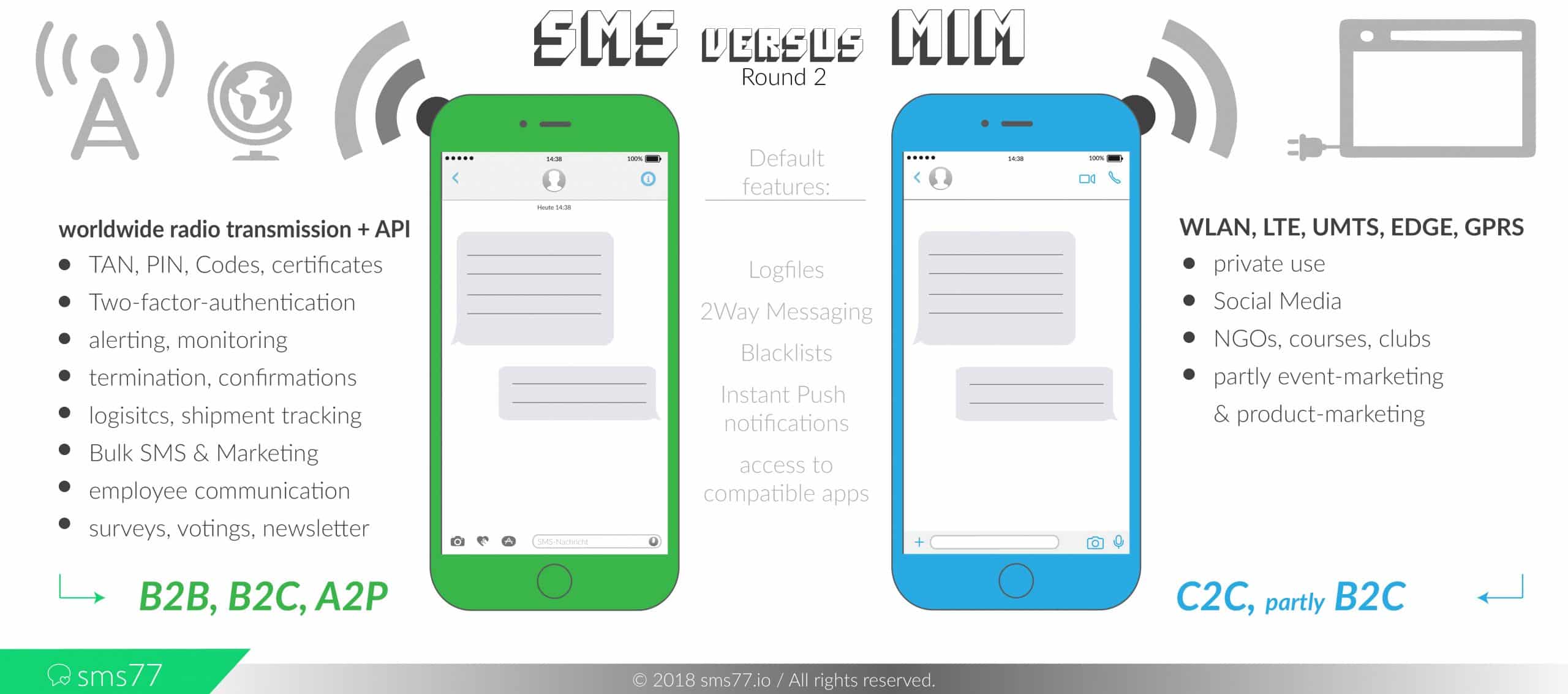When it comes to mobile communication or even complex CpaaS solutions, SMS and MIM seem to vehemently emphasize their differences. In reality, the two messaging services also have a lot in common, from which they could both benefit.
Quality versus quantity
Just a few years ago, some IT prophets were convinced that short messaging services (SMS) would “die out”. In fact, the balance sheets fell – but mostly in the area C2C. Instead Mobile Instant Messaging (MIM) has prevailed. The reasons: unlimited number of characters, mostly free applications and the benefits of a mobile chat room. Participants can exchange directly and without time delay – in a manner of speaking, live. The transmission is done by push, the message is displayed immediately and can be answered in real time. Unfortunately, the free capacity is often abused for endless texts. According to surveys, anyone who wants to be brief actually prefers SMS. Not least because of that, short gets a whole new meaning…
Mobile radio transmission and mobile data are on the same wavelength in terms of speed as well, so that with good connection, there’s nearly no difference between the transmission time of SMS and MIM. In some sparsely serviced regions, smartphones can only receive Edge or even just GPRS. SMS, however, find their way to the receiver by radio in a fraction of a second, in whichever network is available. The mobile phone networks are still developed better nationwide, although WiFi hotspots and Co. catch up considerably.
For B2B, B2C and for the most part also for A2P communication SMS remain therefore further established. Depending on the application scenario, the benefits of a brief message outweigh those of chat conversations. At the same time, push notifications from apps supplement mobile communication and thus also the customer experience.
So if you want to achieve optimal accessibility, you should use several communication tools. Quantity and quality are best combined this way.

